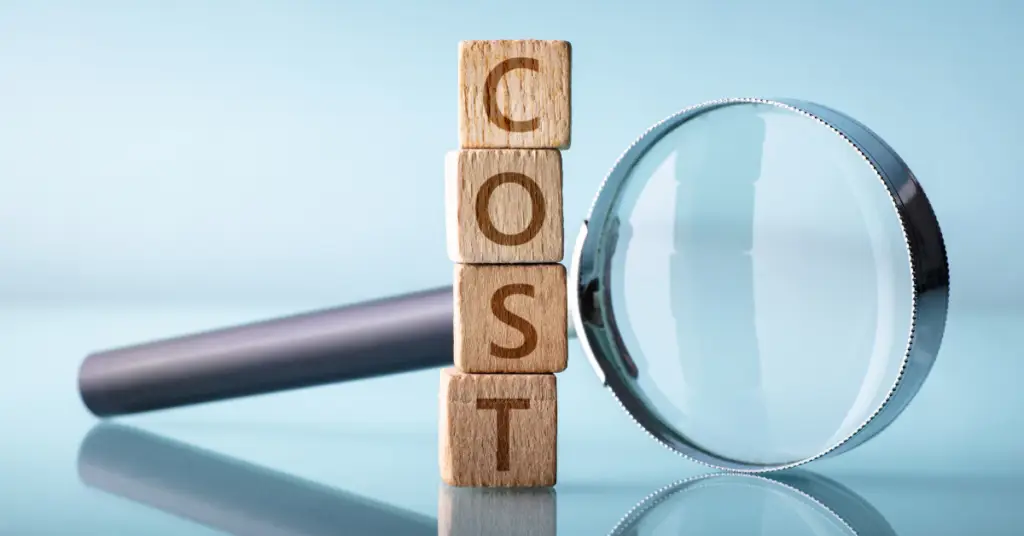Accurately calculating the cost of direct materials is essential for businesses that manufacture products or handle inventory. Understanding direct material costs helps in budgeting, pricing, and maintaining profitability. Whether you’re a small business owner or a supply chain manager, knowing how to calculate direct materials used effectively can drive better financial decisions and operational efficiency. In this blog, we’ll explore the methods for calculating direct material costs, the factors to consider, and how to apply these calculations in real-world scenarios to enhance your financial management. We’ll be discussing:
- What is the Cost of Materials?
- Why Calculate the Cost of Materials
- Factors to Consider in Material Cost Calculation
- How to Calculate Cost of Materials
- Example of Cost of Materials Calculation
What is the Cost of Direct Materials?

What is the Cost of Direct Materials?
The cost of direct materials refers to the total expense incurred to acquire raw materials or components used directly in the production of goods. It includes not just the purchase price of the materials but also any additional costs associated with acquiring and handling them. Accurate direct material cost calculation ensures that you price your products correctly and manage your inventory efficiently, which is crucial for maintaining a healthy bottom line.
Why Calculate the Cost of Direct Materials?
Understanding direct material costs is crucial for several reasons:
- Accurate Pricing: Knowing the precise cost of direct materials helps in setting accurate prices for your products. It ensures that you cover costs and achieve desired profit margins. Furthermore, it avoids the pitfalls of underpricing and helps maintain a competitive edge in the market.
- Budgeting and Forecasting: Calculating direct material costs not only aids in creating realistic budgets and forecasts, but also is essential for financial planning and resource allocation. Moreover, accurate cost estimates help prevent budget overruns, thereby supporting strategic decision-making.
- Cost Control: By tracking direct material costs, businesses can identify areas where they can reduce expenses, negotiate better prices with suppliers, or find more cost-effective materials. Effective cost control measures improve overall profitability and operational efficiency.
- Inventory Management: Accurate direct material cost calculations assist in managing inventory levels, reducing waste, and optimizing stock levels. Proper inventory management ensures that resources are used efficiently and that production runs smoothly.
Factors to Consider in Direct Material Cost Calculation
When calculating the cost of direct materials, several factors should be taken into account:
- Purchase Price: The base cost of acquiring the raw materials or components from suppliers. This is typically the amount listed on purchase invoices and forms the foundation of direct material cost calculation.
- Shipping and Handling: Costs associated with transporting and handling materials, including freight charges, packaging, and delivery fees. These costs can add significantly to the total direct material cost and should be carefully considered.
- Taxes and Duties: Any applicable taxes or import duties that are added to the cost of materials, especially for international purchases. These charges can vary based on the product’s value, weight, or classification and can impact overall costs.
- Insurance: Costs associated with insuring materials during transit. Insurance protects against potential loss or damage and is an important factor in calculating the total cost of direct materials.
- Storage Costs: Expenses related to storing materials, such as warehousing fees or costs of maintaining inventory. Effective management of storage costs helps in optimizing inventory and reducing overheads.
- Labor Costs: If applicable, include the cost of labor for handling, processing, or preparing materials. Labor costs can affect the overall direct material cost and should be factored into the calculation.
How to Calculate Cost of Materials

How to Calculate Direct Materials Used
Here’s a step-by-step guide on how to calculate direct materials used:
Example Calculation:
Total Cost of Direct Materials Used=Total Purchase Price+Total Shipping and Handling Costs+Taxes and Duties+Storage Costs+Labor Costs
Total Cost of Direct Materials Used=$500+$70+$30+$40+$60=$700
Determine the Purchase Price:
Start with the base purchase price of the materials. This is the amount you pay the supplier for the materials and represents the initial cost of acquisition.
Example: If you buy 100 units of material at $5 per unit, the total purchase price is:
Total Purchase Price=100 units×$5/unit=$500
Add Shipping and Handling Costs:
Include all costs associated with transporting and handling the materials. This could involve freight charges, packaging, and delivery fees, which contribute to the total cost of direct materials.
Example: If shipping costs are $50 and handling fees are $20, the total shipping and handling cost is:
Total Shipping and Handling Costs=$50+$20=$70
Include Taxes and Duties:
Add any taxes or import duties that apply to the materials. These charges can impact the overall cost and should be included in the total direct material cost calculation.
Example: If the tax and import duty amount to $30, add this to the total.
Account for Storage Costs:
Include costs related to storing the materials in your warehouse. Properly accounting for storage costs helps in managing inventory efficiently.
Example: If monthly storage fees are $40, include this cost.
Add Labor Costs (if applicable):
Include any labor costs associated with handling or processing the materials. Labor costs can influence the overall direct material cost and should be factored into the calculation.
Example: If labor costs for handling the materials are $60, add this to the total.
Calculate the Total Cost of Direct Materials Used:
Sum up all the costs to arrive at the total cost of direct materials. This comprehensive total reflects the complete expense incurred to acquire and manage the materials.
Example of Cost of Materials Calculation

Let’s say you’re calculating the cost of materials for a batch of products:
- Purchase Price: $500
- Shipping and Handling: $70
- Taxes and Duties: $30
- Storage Costs: $40
- Labor Costs: $60
The total cost of materials would be: $500+$70+$30+$40+$60=$700
Thus, the cost of materials for this batch is $700.
Conclusion
Calculating the cost of materials is a critical aspect of managing production costs and pricing products effectively. By considering all relevant factors—such as purchase price, shipping costs, taxes, storage costs, and labor—you can arrive at an accurate material cost. Consequently, this knowledge enables better budgeting, pricing, and cost control, which ultimately contributes to improved profitability and operational efficiency.
Furthermore, mastering material cost calculations is essential for making informed financial decisions and maintaining a competitive edge in the market. By following these steps, you can ensure that your material costs are accurately accounted for, which leads to better financial management and success in your business endeavors.
Related Content






